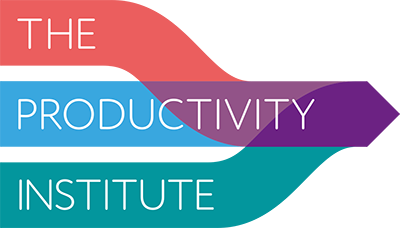Effects of UK government pandemic support on small businesses
Covid-19 government support schemes for smaller businesses are contributing to more positive investment intentions and employee wellbeing, and in doing so potentially sustaining or growing productivity in the longer term, write Halima Jibril and Stephen Roper, who co-authored the TPI research paper Covid-19 business support and SME productivity in the UK.
Economic recovery from the Covid-19 pandemic is at the forefront of the policy agenda across the globe. Particularly important is the ability of Small and Medium Enterprises (SMEs) to bounce back and become more productive post-pandemic. At the start of 2021, UK SMEs represented 99.9% of the number of businesses in the UK and accounted for over half of revenues and 60% of employment in the private sector.[1]
Unsurprisingly, then, the UK government continues to prioritise small business support as a key component of its economic recovery strategy. The autumn 2021 budget announced, among other things, a cut to business rates and an extension of the government’s recovery loans scheme. These follow an announcement earlier this year of the £520m Help to Grow scheme intended to help small businesses boost their productivity.
In some of our recent research we have examined the government’s emergency Covid-19 support programmes introduced at the start of the pandemic: the furlough scheme and government backed loans. Businesses of all sizes all across the country took up these schemes, but what effects have they had on small businesses? And how might this shape small business performance as the economy recovers?
Ultimately, we are interested in how schemes such as furlough and loans shape the growth and productivity of businesses. It’s early days, and data to assess these bottom-line effects will only become available in early 2022. For now, though, we can explore how these schemes are influencing the behaviour of businesses and that of their workforces. So, we can consider how these schemes are influencing both investment intentions and employee wellbeing. Both are well-established lead indicators for future productivity. Investment in equipment, innovation and training will be important in maintaining and building new capacity. Employee wellbeing – good mental and physical health – also contributes to higher productivity.
Our analysis draws on two surveys of SMEs covering around 12,000 businesses in total. The surveys were conducted in the middle of the pandemic period (October 2020 to March 2021). We use statistical models which allow us to standardise for other factors and estimate the effects of the furlough scheme, the Coronavirus Business Interruption Loan Scheme (CBILS) and Bounce Back Loans (BBLs).
We find that the furlough scheme and loan schemes, both individually and when businesses are in receipt of both, have a strong and positive effect on future investment planning. For example, businesses which received a combination of furlough and loans are 17.2 percentage points more likely to plan investments in capital equipment than businesses with no pandemic support. These strong effects are consistent across a range of different types of investment planning. Impacts also tend to be larger among smaller businesses. This makes sense as smaller businesses are likely to be more cash constrained and so the loan and furlough schemes are making the most difference in these businesses.
The furlough and loan schemes are also having positive wellbeing effects. Businesses which received a combination of furlough and loans are 9.2 percentage points less likely to report mental health absences and 9.9 percentage points less likely to report sickness absences.
What is going on to deliver these strong effects? Both the furlough and loan schemes are contributing to business cash flow and this may be encouraging investment planning. The link to wellbeing is less direct, but the use of furlough may have positive effects in terms of job security. We also know that many businesses have introduced new support mechanisms for employees over the pandemic period, which may be easier to do when the business has stronger cash flow.
While it is too early to draw firm conclusions, our results suggest that loans and the furlough scheme are contributing to more positive investment intentions and employee wellbeing, and in doing so potentially sustaining or growing productivity in the longer term. This provides some good news for the Treasury and for recipient businesses and their workforces about potential impacts on future productivity.
[1] Federation of Small Businesses SME statistics. Available at https://www.fsb.org.uk/uk-small-business-statistics.html. Accessed 03/11/2021
This blog was first published by the Bennett Institute of Public Policy. An additional insight into the paper, written by Dr Halima Jibril and Professors Stephen Roper and Mark Hart, can be read on the TPI blog Helping firms along the right road?



